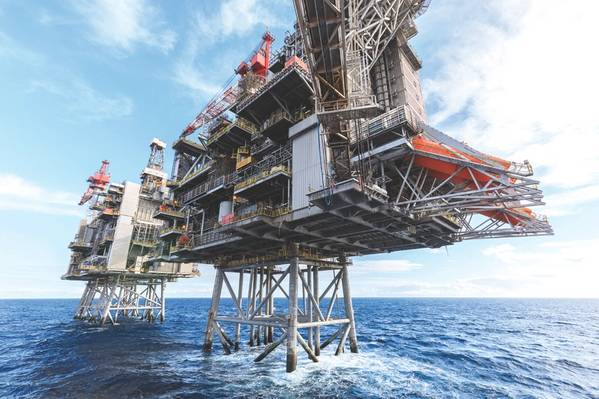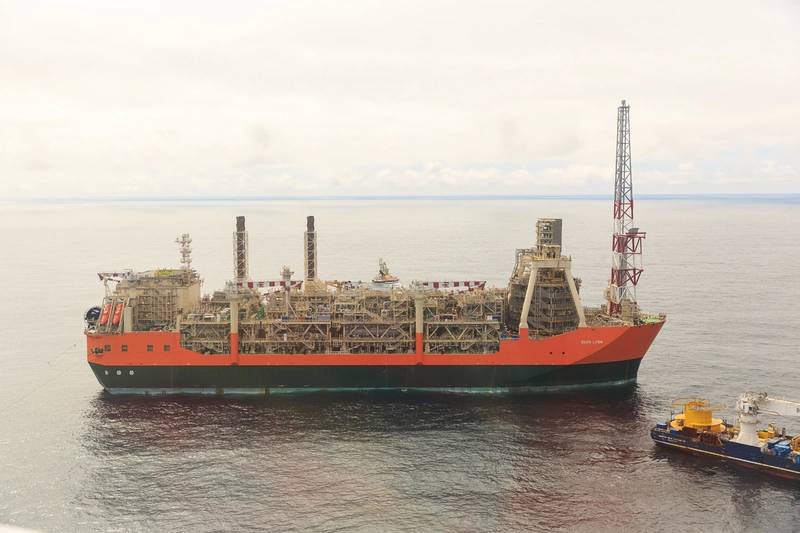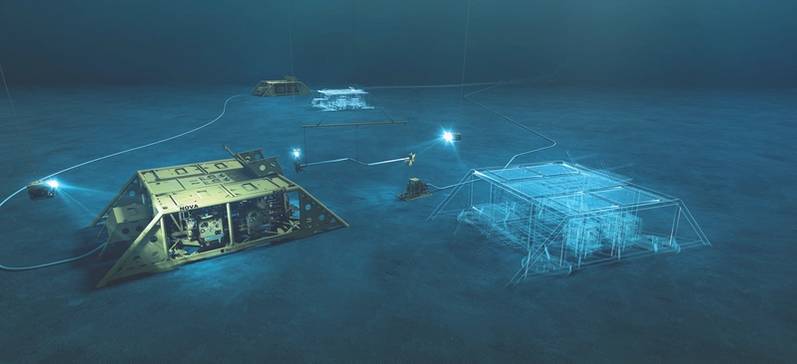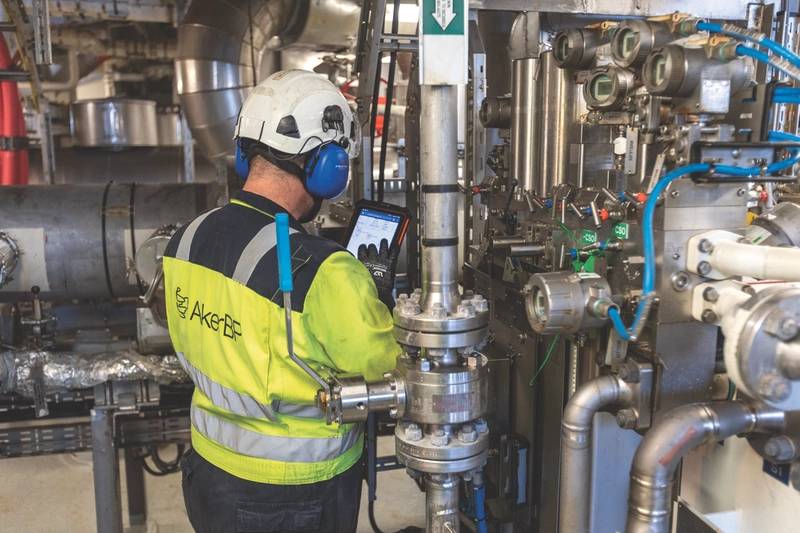
Asset managers leveraging advanced sensor technologies, vast pools of stored and processed data, and real-time analytics are able to foresee—and prevent—costly component failures.
A recent report from Lloyd’s Register points out that predictive maintenance has been proven to lead to cost savings of 10% to 40%, yet only 18% of those surveyed in the US oil and gas industry have adopted this approach. But interest and real-world implementation are on the rise.
As technologies continue to improve and assets in the offshore oil and gas sector become increasingly digitized, predictive maintenance is emerging as a means toward improved operational productivity, efficiency and safety, and the benefits are being seen across the industry.
The adoption of data analytics and digital technologies for asset maintenance and operations can increase production and lower maintenance costs, presenting a value of £1.5 billion ($1.8 billion) annually to the UK continental shelf (UKCS), according to a study published in 2018 by the Oil and Gas Authority, Technology Leadership Board and the Oil & Gas Technology Center.
That same study, which examined the use of data from topsides production and operations equipment, and how it can improve production efficiency and maintenance planning, found that around 110 million barrels of oil equivalent was lost to critical equipment failures on the UKCS in 2017.
Emerson is one of the firms providing predictive maintenance capabilities to help avoid those costly equipment failures and production losses. Under a long-term contract with BP, the US-based company is providing predictive maintenance and operational support services for two of the UK supermajor’s operating assets in the inhospitable waters West of Shetland.
Emerson was the main automation contractor for the Glen Lyon floating production, storage and offloading unit (FPSO) and Clair Ridge platform projects, and it secured an additional five-year award to provide ongoing operational support services, remote monitoring and predictive maintenance technologies for both projects.
The Clair Ridge and Glen Lyon solutions rely on Emerson’s Plantweb digital ecosystem technologies, software and services, including includes the DeltaV integrated control and safety systems, AMS asset management software as well as measurement and control devices, which deliver real-time production data and analytics to plant personnel. BP is able locally control operations, while remotely monitoring production and asset health from an onshore location.
 Glen Lyon FPSO (Photo: BP)
Glen Lyon FPSO (Photo: BP)
Digital twin
A key enabler for predictive maintenance is the digital twin, which is essentially a virtual representation of a physical asset. Importantly, digital twins facilitate data driven engineering, production and maintenance decisions.
Aker Solutions is building a complete digital twin of the production system at the Wintershall-Dea-operated Nova field currently being developed as a subsea tieback to the Neptune-operated Gjøa platform in the Norwegian section of the North Sea.
Experts at Aker Solutions’ software house ix3 working to create the Nova digital twin recently looked at how live data streaming and condition performance monitoring (CPM) could be added, said Are Føllesdal Tjønn, Head of Software Development for Aker Solutions.
“With live data streaming we can provide visual remote monitoring and status of a subsea control system from any location with internet access, using live process data from the Aker Solutions’ ‘cloud data lake’. This will allow users to verify the current state of a control system as well as support fault finding,” Tjønn said.
“We establish a real time data stream from the control system into Aker Solutions’ cloud data lake (digital twin), processing the data stream to detect anomalies and create insight about condition and performance, and visualize the data, anomalies and insights in a user-friendly application,” he added.
 A complete digital twin of the Nova production system field being built by Aker Solutions will enable predictive maintenance capabilities. (Image: Aker Solutions)
A complete digital twin of the Nova production system field being built by Aker Solutions will enable predictive maintenance capabilities. (Image: Aker Solutions)
The company’s condition monitoring software application Subsense, being implemented with help from fellow Aker company Cognite, enables control system data to be transferred to the cloud so it can reach the subject matter experts and the software programs analyzing it, Tjønn said.
Through the digital twin platform, which Aker Solutions calls Integral, Subsense can be integrated with a wider offering, such as Coabis for inspection data, customers’ enterprise solutions and/or a range of third-party packages. Subsense enables users to take advantage of cloud computing services, machine learning models and the ability to combine data from different sources such as maintenance logs and product data, Tjønn said.
“In our world, a failure is typically the end result of a chain of events that occur on different subsystems, where data have historically been disparate – in varying formats, with different levels of fidelity. We bring this data together, ‘even’ it out and create insights from the data,” Tjønn said.
“The system is available to operational staff, managers and engineers, at both operator and Aker Solutions, and it typically works in the background providing notifications. Our service team monitor and interface directly with the application to ensure that those notifications that reach the operations room add value and don’t distract from already busy schedules.”
“CPM analytics are typically planned for hydraulic systems, electrical system, communications, electronics, gate valves, chokes and instrumentation,” Tjønn said.
“Applying advanced machine learning, the system learns what normal behavior is, and can highlight potential problems before they turn into faults. It also learns from events across all Aker Solutions-monitored assets, which means knowledge can be shared globally, without sensitive data from each individual field.”
‘Data liberation’
The world’s most advanced oil and gas platforms, such as the highly digitized Ivar Aasen operated by Aker BP in the Norwegian sector of the North Sea, produce more than just hydrocarbons. They also generate and transmit large volumes of data to be interpreted and analyzed.
In 2018, Aker BP entered a “smart service contract” with software firm Cognite and pumps supplier Framo, whereby Cognite liberates and organizes Aker BP’s industrial data to create a digital representation of Ivar Aasen, both retrospectively and in real-time. Aker BP is then able to extract operational data insights to be shared with partners like Framo to use for predictive maintenance.
With access to live and contextualized data, Framo is able to create its own applications to predict the status of its equipment and plan maintenance in advance, Trond Petter Abrahamsen, Managing Director of Framo Services AS, said in a statement when the “data liberation contract” with Cognite and Aker BP was announced. “The new system sends intelligent data on our pumps, so we can predict how the pumps will perform in the future,” he said.
Another goal of the initiative is to change the traditional approach to maintenance, Framo said. Continuously flowing live data allows for onshore monitoring of equipment replacing unnecessary scheduled maintenance activities with maintenance when needed.
“While our service agreements previously just defined hourly rates, we will now focus on uptime. This is something completely new for us and has required the design of new smart contracts with Aker BP,” Abrahamsen said.
 Using live and contextualized data from the Ivar Aasen platform, Framo is able to predict the status of its equipment and plan maintenance in advance. (Photo: Aker BP)
Using live and contextualized data from the Ivar Aasen platform, Framo is able to predict the status of its equipment and plan maintenance in advance. (Photo: Aker BP)
An AI app
Oilfield services company Baker Hughes, a GE company (BHGE) is also advancing its predictive maintenance capabilities. Its joint venture with enterprise artificial intelligence (AI) software provider C3.ai recently launched BHC3 Reliability, an AI application that provides early warning of production downtime and process risk and gives failure prevention recommendations and prescriptive actions.
The generally available app uses deep learning predictive models, natural language processing and machine vision to continuously aggregate data plant-wide sensor networks, enterprise systems, maintenance notes, and piping and instrumentation schematics. Using historical and real-time data from entire systems, AI and machine learning models identify anomalous conditions that lead to equipment failure and process upsets across any number of assets and processes, and then alerts the user to take proactive action.
A BHGE spokesperson told Offshore Engineer that the company is currently working with a customer on the implementation of BHC3 Reliability and that a number of other customers have expressed interest.



